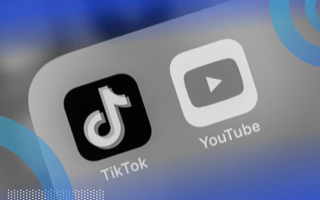Hold onto your shopping carts — social commerce is projected to hit more than $1 trillion globally by 2028. In this e-commerce frenzy, two digital giants, YouTube and TikTok, are duking it out for the top spot.
It’s like the Muhammed Ali versus Joe Frazier of social media, and brands are watching closely to see who emerges victorious. Let’s dive into this content clash and figure out how your brand can cash in on both.
How to Build Your Brand on YouTube vs. TikTok
- Use YouTube to create content that educates and builds a relationship with your audience. Consider live-streaming events, behind-the-scenes content and tutorials. Make it easy for viewers to buy directly through your channel with Shopify integrations.
- Use TikTok to get playful and jump on trends. Create short, snappy videos that show off your product in action. Focus on challenges, hashtags and influencer partnerships that can spark viral interest. Tailor your content to encourage instant engagement and conversions.
YouTube: Long-Form Muscle
YouTube has long been the go-to for deep-dives, tutorials, product reviews and, yes, endless cat videos. But now it’s growing up, and it’s turning views into sales.
YouTube has teamed up with Shopify, letting creators sell merchandise directly through their channels. Think of it as going from the “like and subscribe” era to the “add to cart” era. And with over 2 billion active YouTube users per month, the potential for brands is enormous.
This partnership has allowed creators to integrate storefronts directly into their videos and live streams, blending content with commerce in a way that feels seamless. Take a fitness brand, for example. Instead of just telling their audience to “grab this gear,” they can now say, “Click the link below and get it directly.” Boom — instant sales.
And the proof is in the numbers: 96 percent of people watch explainer videos to learn about products, and 89 percent have been convinced to make a purchase after watching one. This makes YouTube a powerful sales engine.
Brands like Glossier and Gymshark even created such strong communities online and earned such a steady stream of loyal customers that they were able to expand from online into physical stores. YouTube is the prime online location to build communities like this.
TikTok: Viral Commerce
While YouTube is slowly evolving into a sales juggernaut, TikTok is already out here making it rain with viral product hits. TikTok’s e-commerce growth is fast, furious and flashy, much like the platform itself.
With more than 1 billion active users worldwide (and counting), TikTok has proven to be a breeding ground for instant sales, with its “shop now” feature and the genius of influencers turning everything into a trending product. One viral post can move mountains — or in this case, entire inventories.
Ever heard of CeraVe? The skincare brand was a staple at drugstores, but after TikTok influencers raved about it, the products flew off shelves like concert tickets. That’s TikTok’s strength: creating viral moments that turn everyday products into must-haves within seconds. It’s the digital version of “blink, and you’ll miss it.”
TikTok’s U.S. e-commerce sales are expected to soar past $69 billion by 2027. This rapid growth has brands flocking to the platform, hoping to catch the next viral wave. TikTok’s ability to drive impulse buys and flash sales is unrivaled. It’s the Wild West of social commerce, where trends explode overnight and a single hashtag challenge can send sales into the stratosphere.
Which Platform Should Your Brand Use?
Let’s be real. It’s not about one platform winning the battle. The beauty of this YouTube versus TikTok rivalry is that both bring different tools to the table, and savvy brands are using them in tandem to maximize reach.
YouTube is the platform for cultivating long-term relationships with your audience. It’s like a slow-burn romance. The more time your customers spend with you, the more they trust you. By taking advantage of its partnership with Shopify, brands can educate and engage while nudging viewers toward a purchase. The key here is building community and trust.
TikTok, on the other hand, is like a fling where sparks fly and everything moves quickly. One well-timed post, and you’ve captured the hearts, and wallets, of an entire generation. It’s a platform built for speed and instant gratification, so if your brand thrives on trends and quick sales, TikTok is where you want to be. But beware, TikTok’s fast-paced nature means staying ahead of trends is key, or you risk getting lost in the endless scroll.
For instance, Glossier has been crushing it on both YouTube and TikTok by tailoring its strategies to each platform’s strengths. On YouTube, the beauty brand focuses on tutorials, behind-the-scenes content and in-depth product launches. The longer format helps establish authority in the beauty space. Over on TikTok, Glossier gets playful with quick product demos and hashtag challenges that engage users and create viral moments, driving instant traffic to their e-commerce site.
Similarly, Gymshark strikes a balance by using YouTube for deep-dive fitness content and influencer partnerships, while using TikTok to create buzz around new product launches with rapid-fire videos and community challenges.
In this battle for social commerce supremacy, YouTube and TikTok aren’t competing for the same slice of the pie; they’re each carving out their own. So don’t pick sides. Whether it’s turning clicks into carts or hearts into loyal customers, the future is bright for brands that can master both.





